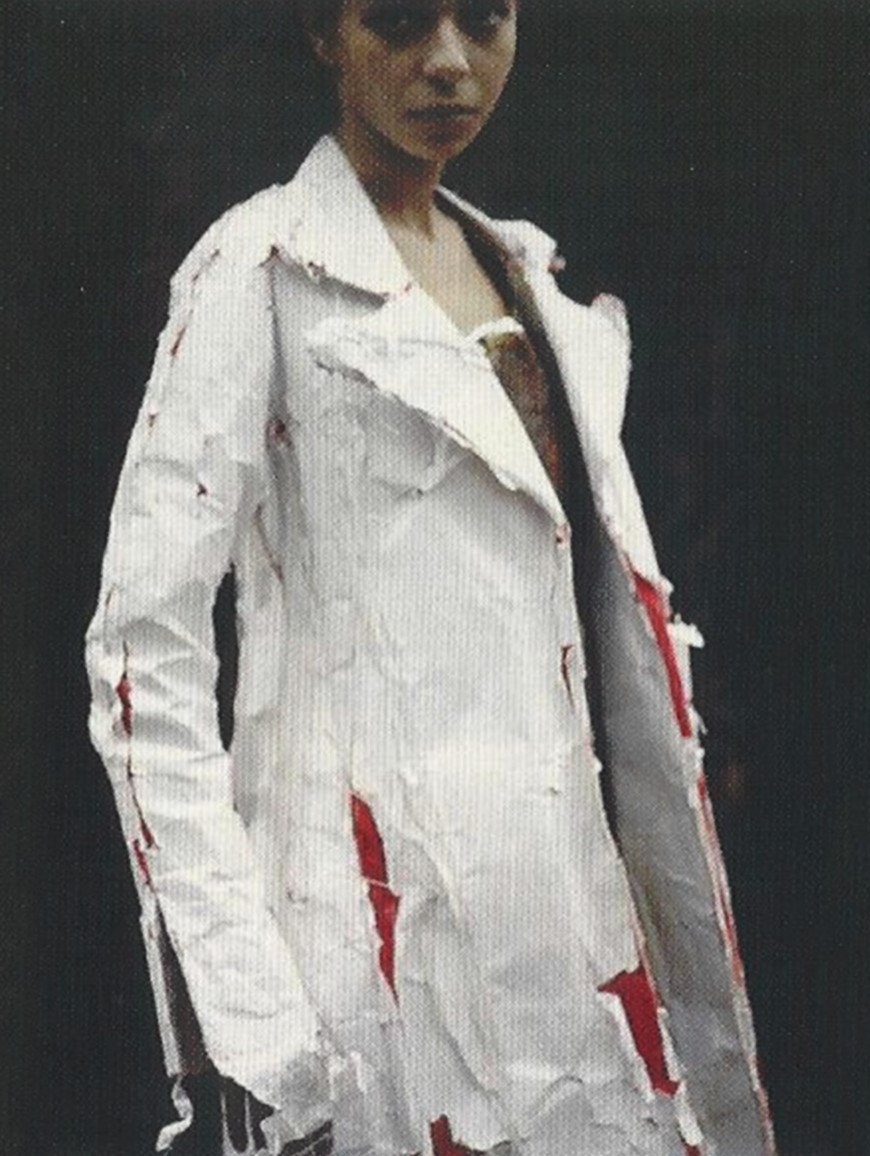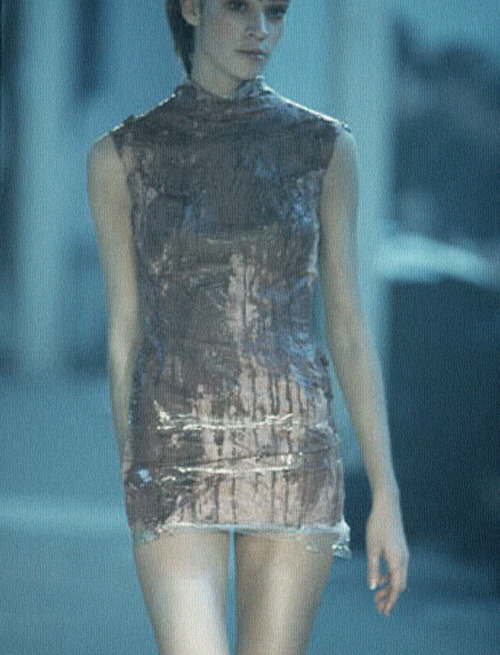Despite what sexed-up
vampire shows like True Blood try to tell us, there is nothing sexy about
death. The cold, grotesque reality of a corpse is something which strikes fear
and disgust into the heart of most – it is a cruel reminder of our finite
reality, our inevitable end. Fashion, however, mostly conjures up far more
pleasant images. From the location-based fantasies of fashion editorial to the
luxury fabrics and displays of extravagance shown on the runway, fashion is
designed to be aspirational. Gender politics and political issues occasionally
get mentioned (mainly thanks to Miuccia and Vivienne), but at its core fashion
is an industry built on aspiration. On the whole, we aspire to wealth and to
beauty, and the runways reflect these aspirations en masse.
However, in a recent
series entitled UGLY, Showstudio launched an investigation into the concept of
ugliness and how it can be rendered desirable in the hands of certain
mavericks. The series is also designed to explore the various reasons for the
social reluctance to accept ugliness – after all, society is informed by its
surroundings. The things that we see and associate as ‘ugly’ are not only
repulsive to us because of our own life experiences and our own perceptions,
but the perceptions of the age in which we grew up. The example that Lou
Stoppard cites as being “of our time” is the Harley Street generation, a legion
of men and women determined to bleach out any imperfection. We are often told
our imperfections are what make us perfect, but in a world of “Human Barbies”
and silicone experiments gone wrong, it seems that we are reluctant to listen
to this advice. It could be as simple as covering a pimple or as extreme as breast
enhancement, the concept remains the same – it is the concept of “self-improvement”
which we are shown to be technologically possible in the modern world.
Unsurprisingly enough, the importance of hygiene and cleanliness is also
related to these examples of aesthetic perfection. Decay, disease, dirtiness – all
of these are to be avoided at all costs. Instead, our bodies and faces should
be gleaming, free of blemishes, plastic, artificial.
This is perhaps why the concept of decay is rarely explored. Decay represents the absolute antithesis of the controlled perfection sought out in the 21st Century. Death is the ultimate relinquish of control – a corpse has lost all autonomy, left powerless to decompose. It is for this reason that designers are reluctant to explore death and decay for fear of alienating an audience; these two subjects are left to the designers seeking to challenge the aesthetic norm of the time, to provoke unrest and swim against the current.
One such designer is
Hussein Chalayan, a Turkish-born designer and graduate from the iconic school
of fashion, Central St Martins. The year was 1993, the height of minimalism.
The public had grown tired of the logo-dominated runways of the 1980s (think
Versace and his head-to-toe chainprints); instead looking to a new wave of
minimalists for style inspiration. Both the Japanese and Belgian avant-gardists
had left their mark on the scene, and the hottest tickets at fashion week were
Helmut Lang, Yohji Yamamoto, Martin Margiela – enigmatic designers favouring a
clean, crisp aesthetic. It was then that Hussein Chalayan launched his graduate
collection, entitled ‘The Tangent Flows’, to huge success. Luxury boutique ‘Browns’
snapped up the entire collection immediately; a huge honour, considering the
last time this had happened was John Galliano’s graduate collection, ten years
previous.
The Tangent Flows
explored the concept of decay in its most literal sense. The collection
consisted of a huge number of oxidised garments, mainly silk dresses, which had
been buried in the designer’s back garden alongside iron filings. They were
then dug up, exhumed and presented alongside an accompanying text which
explained the design process. The collection was a commentary on ritual – the ritual
of burial, followed by the ritual of resurrection. The two antitheses; life and
death.The symbolism of the silk dresses are also important, as silk is often
considered to be the most luxurious and most expensive fabric. The process of
creating the collection literally depicted the decay of luxury, the decay of
conventional beauty and status.
Other designers have
toyed with notions of decay, usually by ripping and deconstructing materials to
symbolise the decay of luxury in much the same way as Chalayan. McQueen’s 1994
Nihilism collection, for example, is literally named after the concept of
indifference to life. Nihilism is a drive to destroy, a truly Decadent state of
mind which views life as worthless, one long journey into obliteration. The
clothes in the collection represented this, many of them made and subsequently
destroyed with chemicals and dyes which wreaked havoc on the symbolic ‘flesh’
of the original fabric. Translucent clingfilm dresses were seemingly left to decay
until they dripped with blood, mould and various other shades of yellow and
brown. They looked dirty, disgusting and rusted in the same way Chalayan’s
dresses were in ‘The Tangent Flows’. This decay was further explored in the
1996 collection ‘The Hunger’, based, ironically, on a vampire film featuring
David Bowie and Catherine Deneuve. The show-stopper of the collection was a moulded
plastic corset, created from various layers of plastic which were sandwiched
together, subsequently trapping swarms of live locusts which danced animatedly
on the model’s torso. The designer dubbed the look a commentary on famine, a
literal depiction of the body in its stages of decomposition.
It seems bizarre that
we shy away from decay, such a natural concept. Instead, we are obsessed with
the clinical, with the new. The minute that clothes show any sign of
decomposition – whether it is a stain, a hole or a rip, we are told to throw
them away, or to donate them. We live in a nation obsessed with consumption to
such an extent that the levels of waste we produce are decaying the most
natural resource that we have – the Earth. McQueen’s 2009 collection, the Horn
of Plenty, visually illustrated this concept with its set made up of an
industrial scrapheap which towered above the models. The heap was filled with
props from past collections sprayed black and piled on top of each other. It
was a commentary on the disposability of luxury, on our reluctance to recycle
and re-use products which have passed their expiration. It was a metaphorical
take on the concept of decay but, like most sartorial explorations of the
concept, it went on to be known as one of the greatest fashion moments in
history.





No comments:
Post a Comment